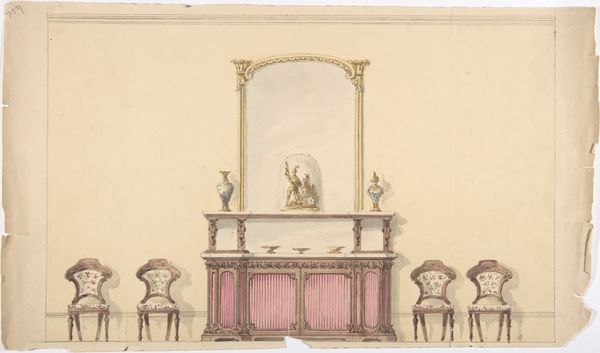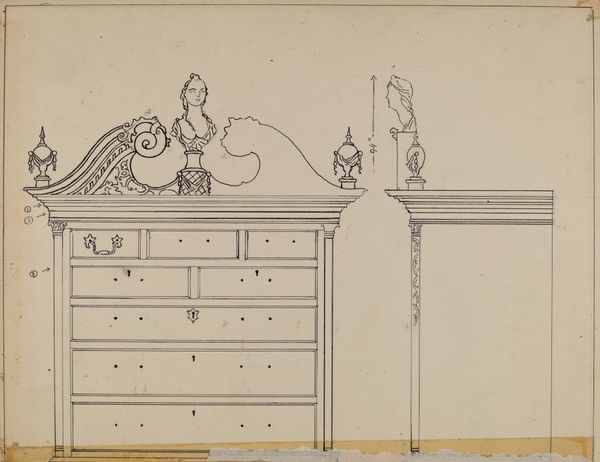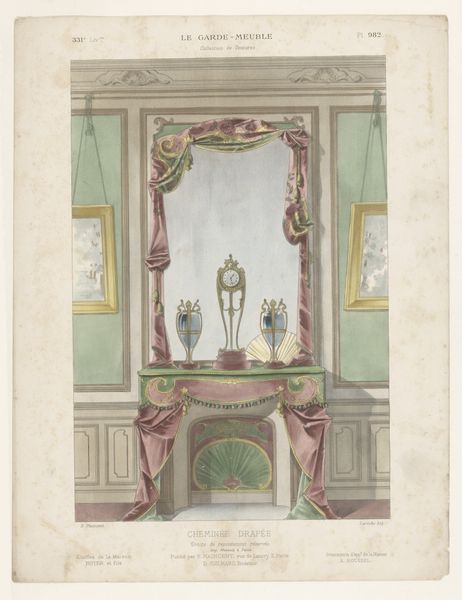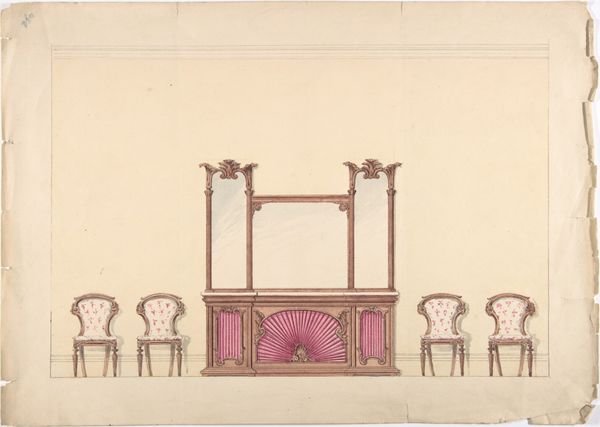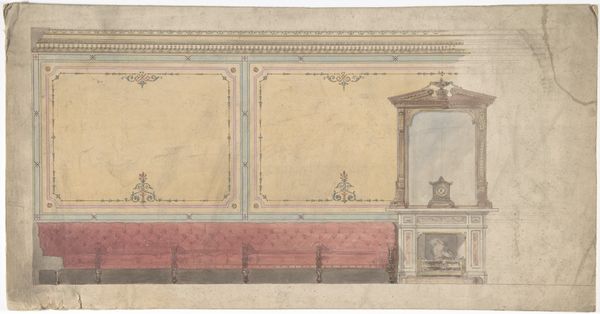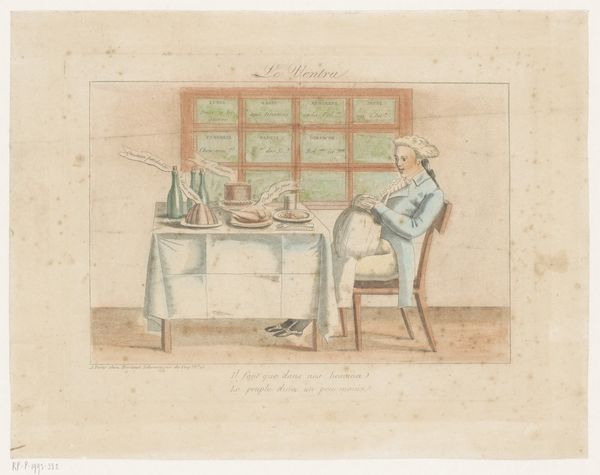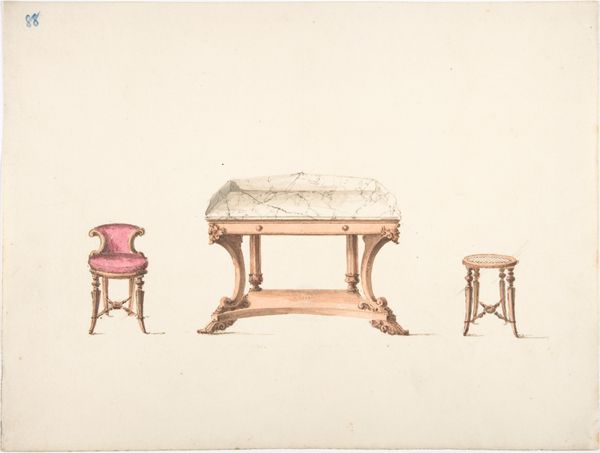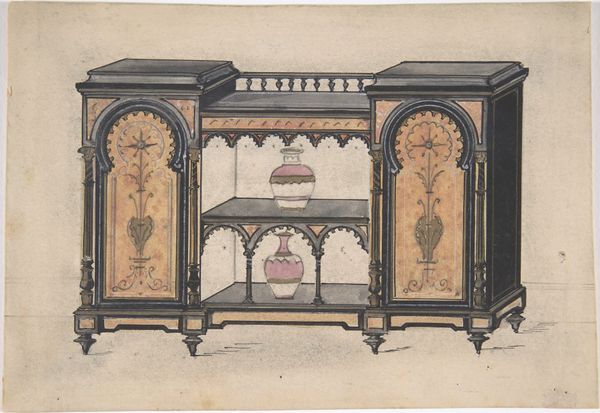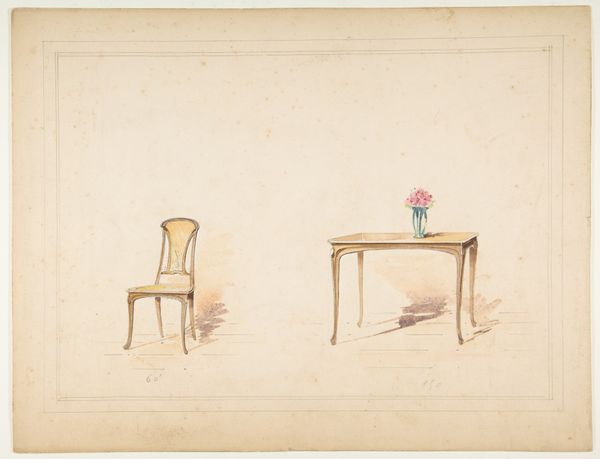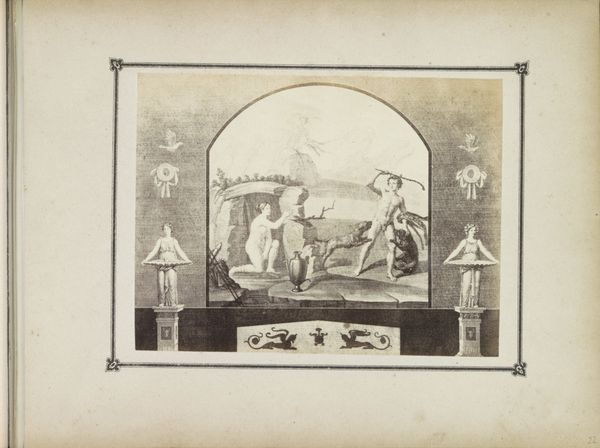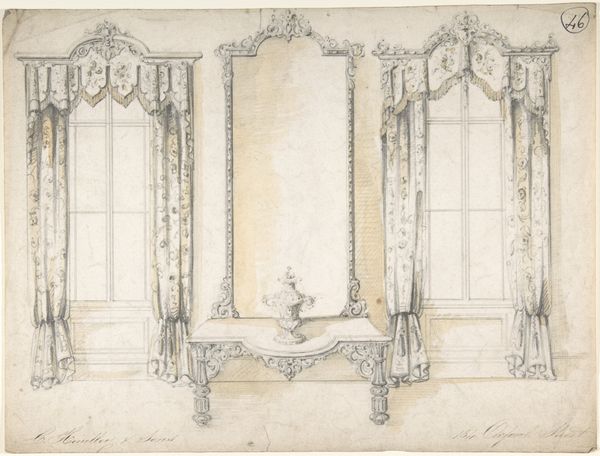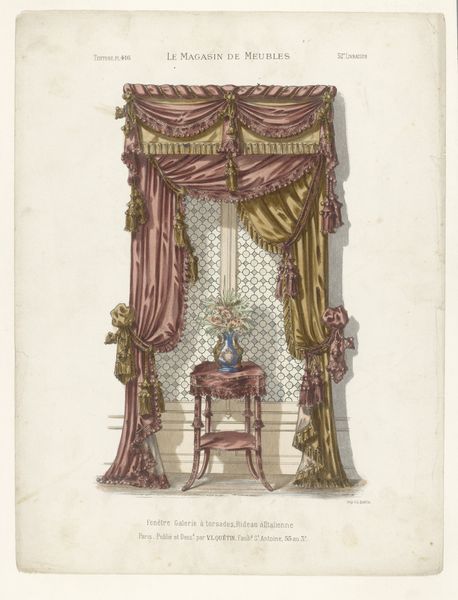
Design for a Mirrored Three Sectioned Marble-topped Cabinet and Two Chairs 1800 - 1850
0:00
0:00
drawing, print, watercolor
#
drawing
#
neoclacissism
# print
#
watercolor
#
decorative-art
Dimensions: sheet: 12 3/16 x 17 in. (31 x 43.2 cm)
Copyright: Public Domain
Editor: This is a watercolor and pencil drawing titled "Design for a Mirrored Three Sectioned Marble-topped Cabinet and Two Chairs," made by an anonymous artist sometime between 1800 and 1850. It feels very formal and balanced to me, almost theatrical in its presentation. What symbols jump out at you? Curator: It's fascinating how this design evokes a sense of aspiration. Note the mirrors, arranged to seemingly extend the perceived space and multiply reflections. This period held mirrors in high regard, not only for their functional use but as symbols of self-awareness and status. Do you notice the objects placed on the marble tops? Editor: Yes, I see what looks like vases, and even a statuette or clock beneath the central mirror. They look more symbolic than functional, adding an air of elegance. Curator: Exactly! Think about what these curated arrangements meant. The desire to emulate the styles and perceived virtues of past eras was really common then. What we see rendered in this design –the Neoclassical influence–reflects a very particular cultural yearning for order and idealised beauty in post-revolutionary societies. It suggests a search for visual metaphors. Editor: So, these mirrors and symmetrical design elements would’ve spoken to a desire for social and political order, not just good interior design? Curator: Precisely. Notice also that, while appearing to extend space, the mirrors also reflect back at the viewer, drawing one into an interplay between reality and artifice. How might the placement of such a piece affect those occupying that room? Editor: I hadn’t considered how self-reflective this design truly is! It makes me wonder how effective it would have been as interior design. Curator: Design doesn't merely fill a space but constructs a psychological environment through objects and their symbolic relationships. Editor: This has been a really interesting discussion – seeing this artwork less as a practical sketch and more as a mirror reflecting an entire society's values. Curator: Indeed! It reminds us that every detail contains a narrative, waiting to be deciphered through history and cultural understanding.
Comments
No comments
Be the first to comment and join the conversation on the ultimate creative platform.

